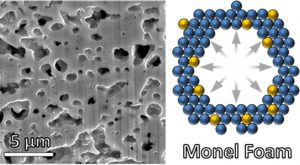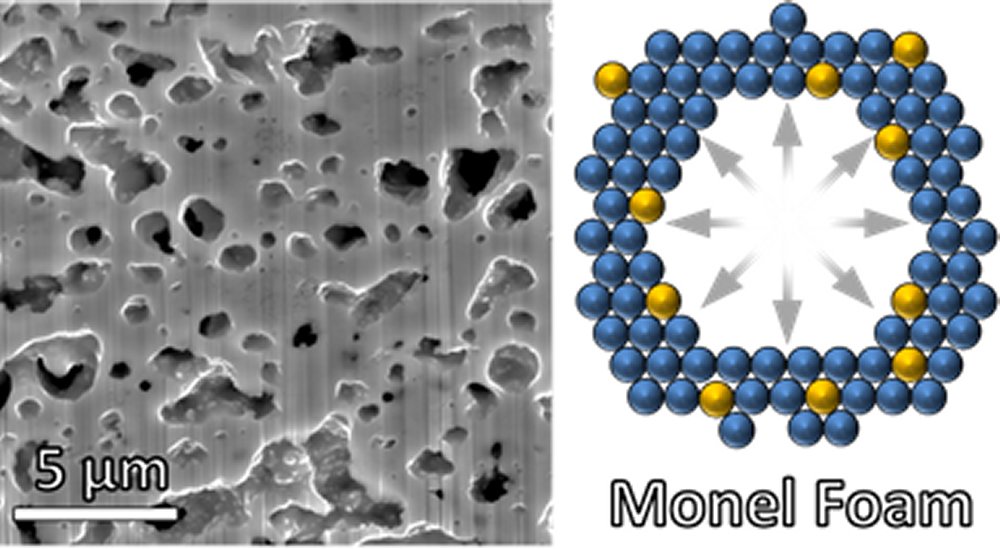Introducing porosity in metals is useful for reducing their effective density, increasing their surface area, and allowing other unique structural and functional properties to be achieved. Methods for producing microscale and nanoscale porosity in metals are often not practical or cost-effective at an industrial scale.
A relatively new process using oxide reduction and expansion creates small pores within metal particles and has the potential to bridge the gap between efficiency and performance. This process starts by mixing oxide particles throughout a metallic matrix. The oxides are then reduced at elevated temperature. The pressure generated during the reduction causes the pores to expand, thereby foaming the metallic matrix. This is the first report of this technique in nickel and nickel-copper alloys, which are valuable for electrochemical applications, corrosive environments, and structural applications.
Alternative methods for creating nickel foams include electrodeposition and chemical vapor deposition (CVD). Electrodeposition is not suitable for bulk material production, but it can produce very small pores and results in high surface area. CVD is used to produce metal foams commercially, but pore size is typically limited to hundreds of microns and above (more often millimeters).
The method used to create nickel foams in this work published recently in Advanced Engineering Materials is scalable and results in small pore sizes. Understanding and controlling the development of porosity is still an important challenge. Pore characteristics and factors contributing to the formation of porosity were examined in relation to various oxide-matrix pairings, including copper, nickel, and alloys of the two, paired with nickel and copper oxides. Important factors include thermal softening of the matrix, reduction characteristics of the oxide, and the development of the microstructure during processing. It is suggested that porosity is maximized by balancing the matrix strength and oxide reduction rate.
One of the primary findings is that the high-strength alloy known as Ni 400 (or Monel), an alloy rarely reported for porous structures, can be made highly porous with moderate temperature. Furthermore, all tested materials retain an ultra-fine microstructure that may contribute to unusually high strength after foaming. These porous powders may also be utilized synergistically in other methods for creating metallic foams to increase the total porosity. With continued development, it is expected that additional metals and alloys may be efficiently produced with unique characteristics.

















